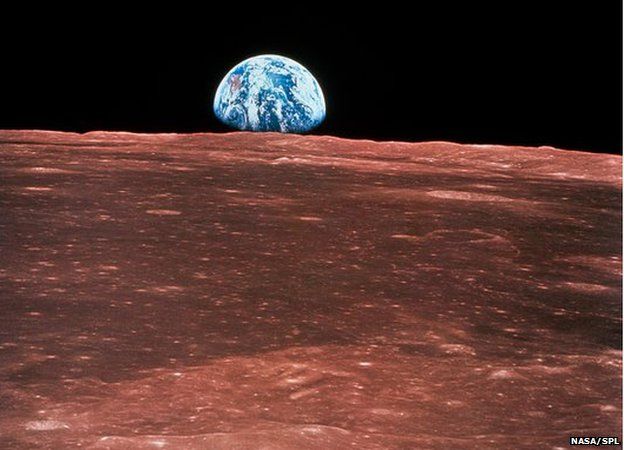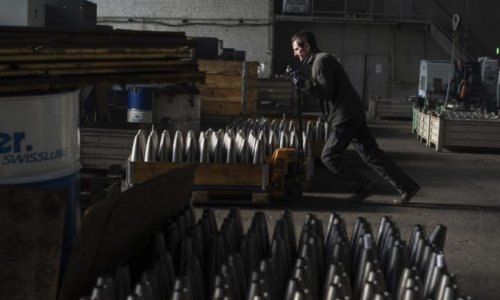The Moon may have been formed by a collision between Earth and an object that was strikingly similar in composition to our own planet.
This could help resolve why Earth and Moon rocks are much more similar than we would expect from this "giant impact hypothesis".
The study is one of three published in the prestigious journal Nature.
Two further research papers in the issue report subtle, previously unseen differences in lunar rocks.
Scientists say they paint a consistent - and much clearer - picture of our satellite's history.
The modelling study, done by researchers from Israel and France, precisely simulates the turmoil of the early, inner Solar System and looks at the sort of collisions that might have occurred.
In its early stages, the proto-Earth would have been subjected to a string of brutal collisions with other wannabe planets.
According to our best understanding, the last of these was a cataclysmic tangle with a planetary body just ten times lighter than Earth - and the resulting debris eventually clumped together to make the Moon.
Insufficiently alien
The problem is that most of what became the Moon should have come from the imposter - and based on our existing knowledge of what was flying where at that time, that imposter was thought to be a very different type of planet.
"So if the impactor had a different composition from the Earth, we should expect the Moon to have a different composition," Dr Hagai Perets, one of the study's authors, told the Nature podcast. But this is not the case.
"They are almost identical. This is one of the major challenges for this really beautiful giant impact hypothesis," said Dr Perets, from the Technion-Israel Institute of Technology.
This is why a study made headlines in 2014 when it pinpointed some tiny differences between Earth and Moon rocks.
What Dr Perets and his colleagues found in their new simulations was that the impactor planet might, in fact, have been made of surprisingly similar stuff to the Earth - leaving only the sort of subtle differences that we do see in lunar material.
"What we found is that many of these impactors on a planet have very similar composition to that of the planets they impact - as similar as what we measure between the Earth and the Moon," Dr Perets explained.
Specifically, the models indicated a 20% chance that the impact could have been between such similar proto-planets.
These odds give our prevailing "origins story" for the Moon a fighting chance, Dr Perets said.
"[Now] I am even more confident about the giant impact hypothesis."
Violent veneer
A different challenge to our current ideas about the Moon relates to what happened subsequently. To explain certain details in the Earth's make-up, scientists have proposed that both the Earth and Moon amassed a large amount of extra matter - a so-called "late veneer" - during a subsequent period when they were bombarded by huge numbers of meteorites.
And just like the original giant impact, this process should also have left a trail of evidence that had not been detected until now.
Even if, as the French-Israeli study now suggests, the Earth and Moon got started from very similar building blocks, this bombardment should have had a much bigger effect on the bulkier, heavier Earth with its much stronger gravity, shifting the balance of its ingredients away from that of the Moon.
The two new investigations of lunar rocks, one from the US and one from Germany, find support for that shift for the first time, by analysing samples from the Apollo missions with new levels of precision.
Both teams looked specifically at traces of tungsten within small chunks of the Moon that they borrowed from Nasa, and found a small but tell-tale difference compared to Earth rock. The ratio of the metal's different isotopes was altered.
www.ann.az
Follow us !











